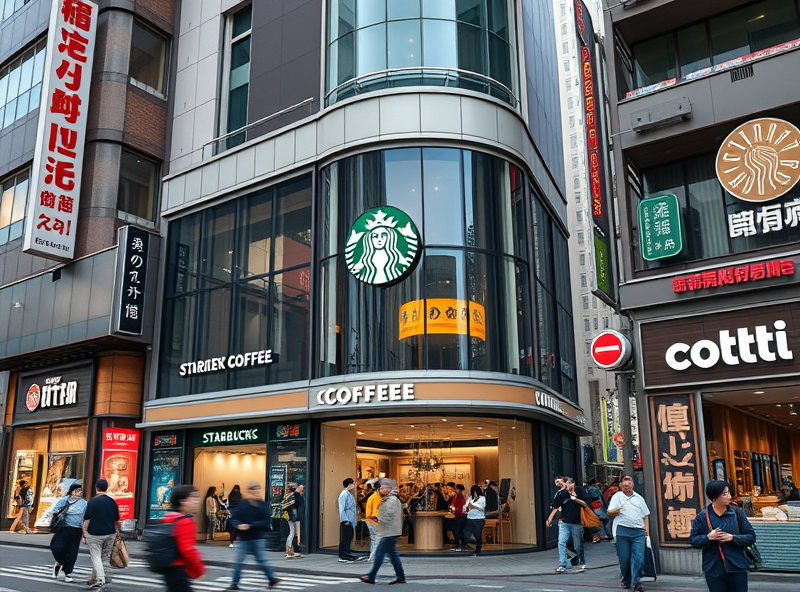
Starbucks in China: Growth Challenges and Competitive Pressures
Declining Market Share Amid Local Competitors
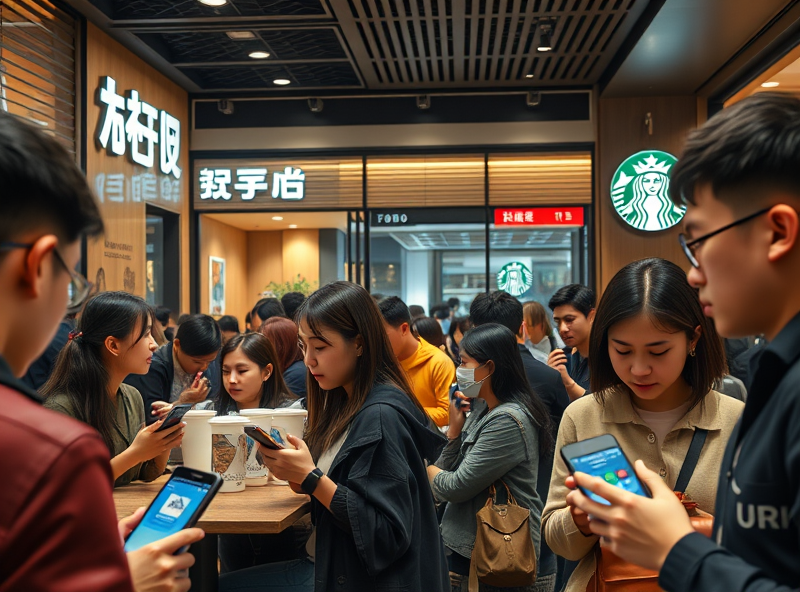
Starbucks, once the undisputed leader in China’s premium coffee market, is now facing increasing pressure from a new wave of local competitors. While the brand still holds a strong presence, its market share has been gradually declining as Chinese consumers turn to homegrown coffee chains that offer greater convenience, localized flavors, and competitive pricing.
One of the key reasons behind this shift is the rapid rise of domestic brands like Luckin Coffee and Manner Coffee. These companies have adapted quickly to local tastes and digital habits, offering mobile-first ordering systems, aggressive discounting strategies, and a strong presence in lower-tier cities—areas where Starbucks has traditionally had limited reach. For example, Luckin Coffee’s tech-driven model and frequent promotions through mobile apps have made it a favorite among younger, value-conscious consumers.
Moreover, local competitors are leveraging data analytics and consumer behavior insights to fine-tune their offerings, often outpacing Starbucks in innovation and speed. This agile approach has enabled them to launch new products and store formats faster, capturing niche markets and expanding their footprint rapidly.
For Starbucks to regain momentum, it may need to rethink its localization strategy, invest more in digital transformation, and explore partnerships that resonate with Chinese consumers. Understanding the evolving preferences of this dynamic market is essential for long-term success.
A recent report by McKinsey & Company highlights how local consumer behavior in China is shifting rapidly, emphasizing the importance of digital ecosystems and value-driven choices. (https://www.mckinsey.com/industries/consumer-packaged-goods/our-insights/what-chinese-consumers-want-from-global-brands)
Expansion Plans into Lower-Tier Cities
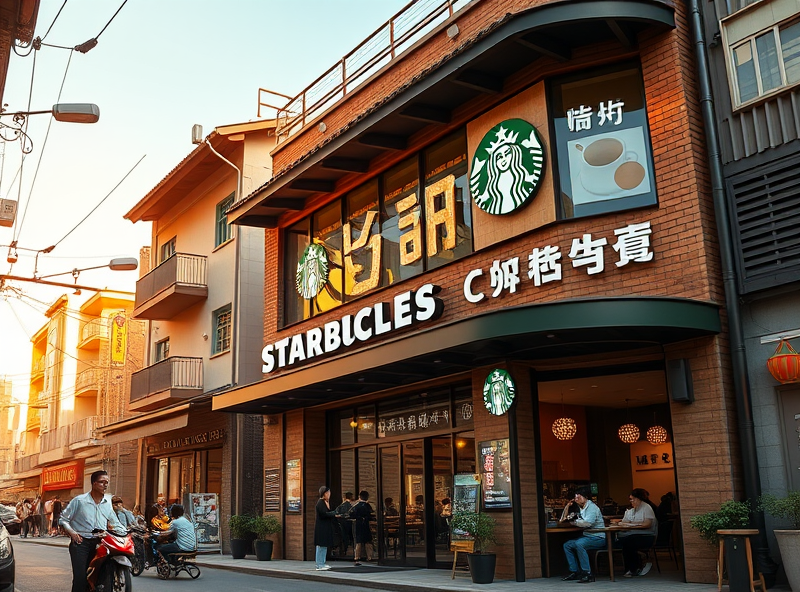
Starbucks has long been a dominant player in China’s premium coffee market, but with increasing saturation in top-tier cities like Beijing and Shanghai, the company is now turning its focus to lower-tier cities as a key growth strategy. These cities—often overlooked by international brands—are home to millions of consumers whose purchasing power and lifestyle preferences are rapidly evolving.
The expansion into lower-tier cities is not just about opening more stores. Starbucks is adapting its business model to local tastes and economic conditions. For example, in cities like Luoyang or Yancheng, the company is introducing smaller-format stores, offering more localized menu items, and integrating with local digital platforms like Alipay and WeChat for seamless mobile ordering and loyalty programs.
This strategy offers multiple benefits. First, it taps into a relatively untapped market with lower competition. Second, it allows Starbucks to build brand loyalty in emerging regions before local competitors gain a strong foothold. Third, it aligns with broader trends in China’s urbanization and middle-class growth, where lower-tier cities are becoming new engines of consumption.
However, challenges remain. Logistics, supply chain efficiency, and workforce training in these regions can be more complex. Moreover, local coffee chains are also expanding aggressively, often with better knowledge of regional preferences and lower operating costs.
For Starbucks to succeed, it must continue to localize its offerings, invest in community engagement, and leverage its global brand while remaining agile in adapting to regional nuances.
Source: https://www.reuters.com/business/retail-consumer/starbucks-plans-expand-9000-stores-china-2025-2022-09-13/
Price Wars and Strategic Investment Considerations
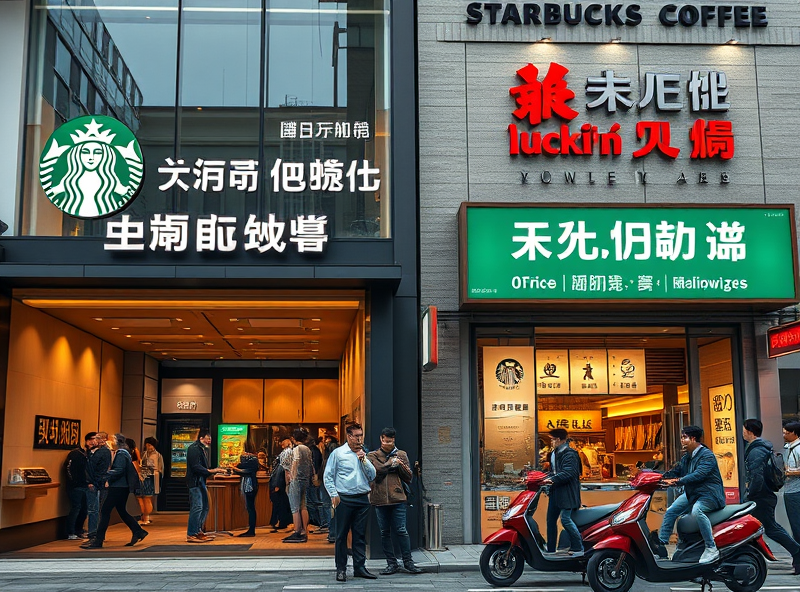
Starbucks has long been a symbol of premium coffee culture in China, but recent market dynamics are challenging its dominance. The rise of local competitors like Luckin Coffee and Cotti Coffee has sparked intense price wars, reshaping consumer expectations and spending behavior. These local brands aggressively offer discounts, loyalty programs, and app-based promotions, significantly undercutting Starbucks’ traditional pricing model.
As a result, Starbucks faces a dilemma: maintain its premium brand image or adapt to a more price-sensitive market. The company has responded by introducing localized products, expanding delivery services, and investing in digital transformation. However, strategic investment must now be more targeted. For example, rather than rapid store expansion, Starbucks is focusing on store optimization, improving operational efficiency, and enhancing customer experience through AI-driven personalization.
Another critical investment consideration is supply chain resilience. With fluctuating commodity prices and global uncertainties, Starbucks is investing in local sourcing and sustainable practices to reduce dependency on international logistics.
For investors and business strategists, the key takeaway is that brand loyalty in China is increasingly tied to value and convenience. Starbucks must balance innovation with cost control, while staying true to its brand ethos. This evolving landscape is a valuable case study in how global brands must adapt to local market pressures.
Source: https://www.reuters.com/business/retail-consumer/starbucks-china-sales-drop-price-war-heats-up-2024-01-31/
Digital Innovation and Sustainable Operations in China
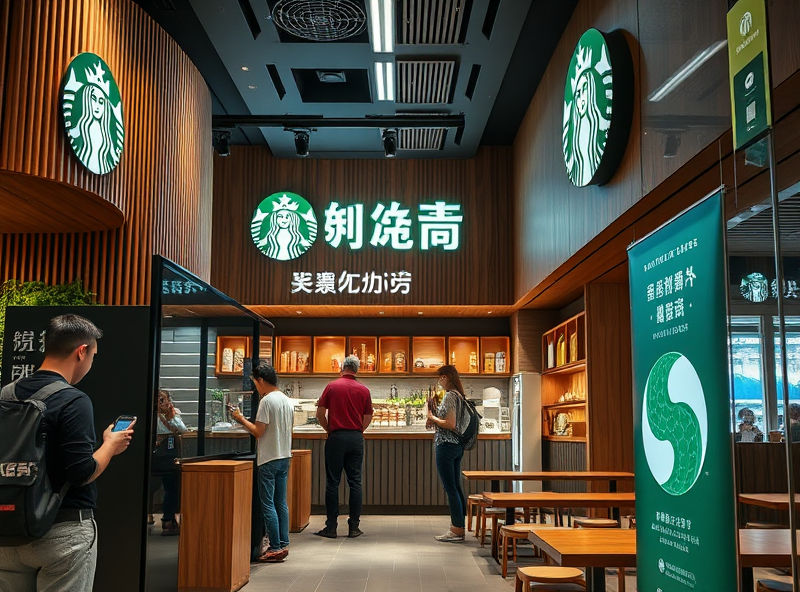
Starbucks has long been a symbol of premium coffee culture, but in China—a market that now represents its second-largest globally—the company is facing increasing pressure to adapt. Digital innovation and sustainability have become essential pillars of its strategy to maintain relevance and growth.
In terms of digital innovation, Starbucks China has been a frontrunner. The company partnered with Alibaba to integrate its services into popular platforms like Ele.me and Alipay, enabling seamless mobile ordering, delivery, and loyalty program integration. This ecosystem approach not only enhances customer convenience but also leverages China’s mobile-first consumer behavior. Starbucks also launched its own AI-powered voice ordering system through Tmall Genie, a smart speaker by Alibaba, making ordering coffee as easy as speaking a command.
On the sustainability front, Starbucks is aligning with China’s growing environmental consciousness. The company has introduced ‘Greener Stores’ in Shanghai and Beijing, which use energy-efficient equipment, reduce water usage, and incorporate recycled materials. These stores are part of Starbucks’ global commitment to cut carbon, water, and waste footprints by 50% by 2030. Additionally, Starbucks China is piloting reusable cup programs and offering incentives for customers who bring their own cups.
For businesses and entrepreneurs, Starbucks’ approach in China offers valuable insights: digital transformation must be hyper-localized, and sustainability is no longer optional—it’s a competitive advantage. As consumer expectations evolve, companies that integrate technology with purpose-driven practices are more likely to thrive.
Source: https://stories.starbucks.com/stories/2022/starbucks-china-accelerates-sustainability-efforts/






